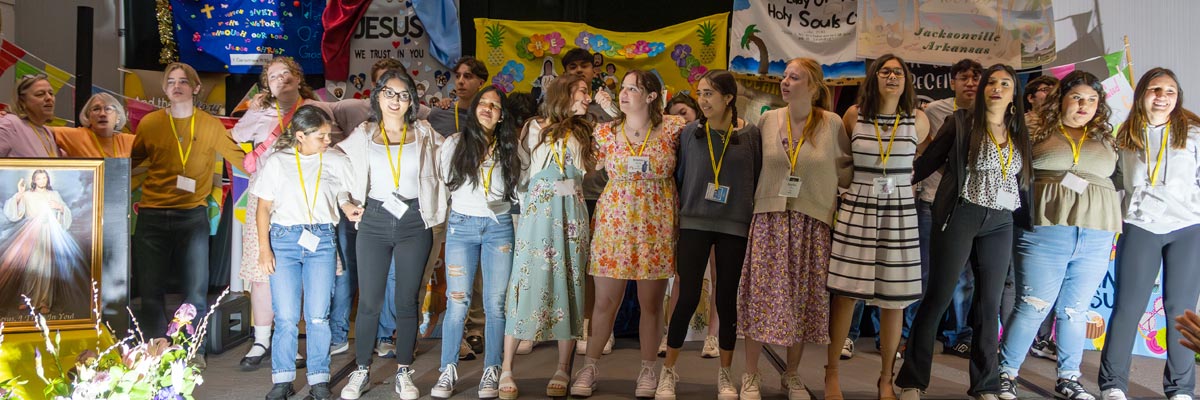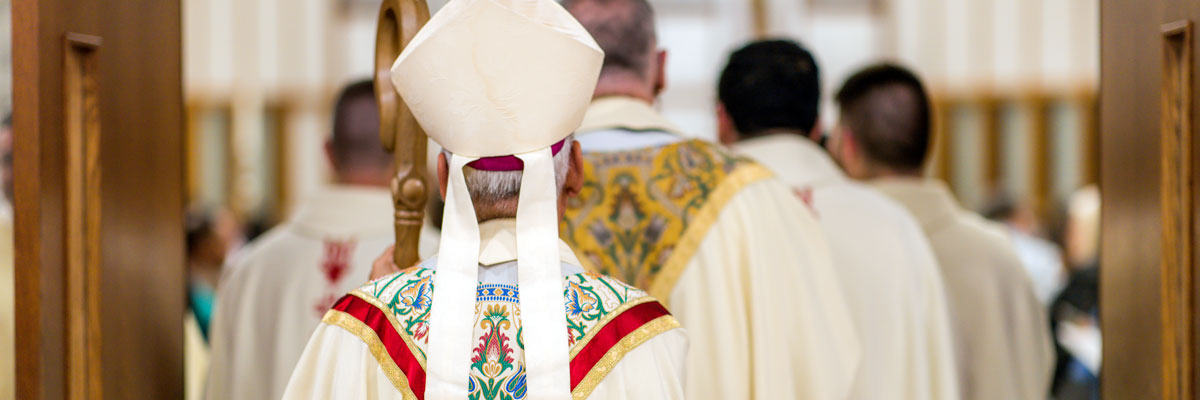Official Website of the
Catholic Diocese of Little Rock
Do we really think about what we say we believe in the creed?
Published: July 1, 2006
By Sandy Compas
Every Sunday at Mass, between the Liturgy of the Word and the Liturgy of the Eucharist, we stand together to profess our faith. “We believe in one God … We believe in one Lord, Jesus Christ … We believe in the Holy Spirit … We believe in one holy catholic and apostolic Church …”
Most of us know the words by heart, but do we grasp their meaning? Do we understand the history, heresies and politics the Fathers of the Church grappled with as they attempted to define our beliefs?
Our creedal statements about God find their roots in the Schema Israel (Deuteronomy 6:4). “Hear, O Israel, the Lord your God is One. You shall love the Lord your God with all your heart, all your mind, and all your strength.” We can learn much from the Israelites’ radical commitment to one God, in the midst of cultures that worshipped many; and from their communal identity as God’s chosen people.
The earliest Christian communities did not need creeds. They had the direct experience of the risen Jesus and the power and presence of the Holy Spirit in their midst. By the second century, fragments of creedal statements were used in baptism. The Trinitarian formula has changed very little today. “Do you believe …?” the new Christian was asked. “Credis!” was the response. “I give my heart.”
As Alfred North Whitehead wrote, “Wherever there is a creed, there is a heretic round the corner or in his grave.” Most of the definitive statements about the Trinity were written and expanded upon in direct response to various heresies.
Our creed comes to life when we understand the language chosen and the history behind it:
Constantine, hoping Christianity would unite his empire, convened the Council of Nicea (325) so the 300 bishops gathered could put an end to the Arian heresy (that Jesus was neither God nor human). Constantine, though unbaptized, took an active role in the proceedings. The bishops agreed that Jesus was “one in being” with the Father — a very controversial statement. The resulting creed declared all who believed otherwise anathema.
If the Council of Nicea dealt a deathblow to Arianism, the Council of Constantinople (381) attempted to nail the coffin shut. The 150 bishops who wrote the Nicene-Constantinopolitan Creed (which we recite today) described our understanding of the Holy Spirit. At the Council of Ephesus (430), our belief in Mary as Theotokos, Mother of God, was clarified against the Nestorian heresy. The Third Council of Toledo (549) inserted the controversial filioque, stating that the Holy Spirit “proceeds from the Father and the Son,” not only from the Father.
The filioque was a major point in differences between the East and West that resulted in the Great Schism in 1054.
The four marks of the Church are ideals toward which we strive. We proclaim the power of baptism and our needs for forgiveness. Finally, our faith in “the resurrection of the dead and the life of the world to come” puts other heresies to rout. Since God created matter, and Christ became flesh, risen from the dead, we trust that matter is good, that our bodies are to be used for God’s glory.
“Amen,” we say, “so be it.” Nourished by the Word of God, united as one, we partake of the body and blood of Christ. We go forth to live what we proclaim, trusting the grace of God to help us do so.
Sandy Compas is associate director for the diocese’s Office of Religious Education and Christian Initiation.









